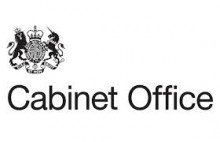Cabinet Office 70 Whitehall London SW1A 2ASOpen +44 (0)20 7276 1234 www.cabinetoffice.gov.uk
From the Chairman of the Joint Intelligence Committee
Ref: Jp 115
Prime Minister 29 August 2013
SYRIA: REPORTED CHEMICAL WEAPONS USE
Following the widespread open source reports of chemical weapons (CW) use in the suburbs of Damascus in the early hours of 21 August 2013, the JIC met on 25 August to agree an assessment. At a subsequent meeting on 27 August we met again to review our level of confidence in the assessment relating to the regime’s responsibility for the attack. The JIC’s conclusions were agreed by all Committee members. The final paper informed the National Security Council meeting on 28 August, at which I provided further background and a summary of the most recent reporting, analysis and challenge. The paper’s key judgements, based on the information and intelligence available to us as of 25 August, are attached.
It is important to put these JIC judgements in context. We have assessed previously that the Syrian regime used lethal CW on 14 occasions from 2012. This judgement was made with the highest possible level of certainty following an exhaustive review by the Joint Intelligence Organisation of intelligence reports plus diplomatic and open sources. We think that there have been other attacks although we do not have the same degree of confidence in the evidence. A clear pattern of regime use has therefore been established.
Unlike previous attacks, the degree of open source reporting of CW use on 21 August has been considerable. As a result, there is little serious dispute that chemical attacks causingmass casualties on a larger scale than hitherto (including, we judge, at least 350 fatalities) took place.
It is being claimed, including by the regime, that the attacks were either faked or undertaken by the Syrian Armed Opposition. Wehave tested this assertion using a wide range of intelligence and open sources, and invited HMG and outside experts to help us establish whether such a thing is possible. There is nocredible intelligence or other evidence to substantiate the claimsor the possession of CW by the opposition. The JIC has therefore concluded that there are no plausible alternative scenarios to regime responsibility.
We also have a limited but growing body of intelligence which supports the judgement that the regime was responsible for the attacks and that they were conducted to help clear the Opposition from strategic parts of Damascus. Some of this intelligence is highly sensitive but you have had access to it all.
Against that background, the JIC concluded that it is highly likely that the regime was responsible for the CW attacks on 21 August. The JIC had high confidence in all of its assessments exceptin relation to the regime’s precise motivation for carrying out an attack of this scale at this time –though intelligence may increase our confidence in the future.
There has been the closest possible cooperation with the Agencies in producing the JIC’sassessment. We have also worked in concert with the US intelligence community and agree with the conclusions they have reached.
Jon Day
JIC assessment of 27 August on Reported Chemical Weapons use in Damascus
A chemical attack occurred in Damascus on the morning of 21 August, resulting in at least 350 fatalities. It is not possible for the opposition to have carried out a CW attack on this scale. The regime has used CW on a smaller scale on at least 14 occasions in the past. There issome intelligence to suggest regime culpability in this attack. These factors make it highly likely that the Syrian regime was responsible.
Extensive video footage attributed to the attack in eastern Damascus (which we assess would be very difficult to falsify) is consistent with the use of a nerve agent, such as sarin, and is not consistent with the use of blister or riot control agents.
There is no obvious political or military trigger for regime use of CW on an apparently larger scale now, particularly given the current presence in Syria of the UN investigation team. Permission to authorise CW has probably been delegated by President Asad to senior regime commanders, such as [*], but any deliberate change in the scale and nature of use would require his authorisation.
There is no credible evidence that any opposition group has used CW. A number continue to seek a CW capability, but none currently hasthe capability to conduct a CW attack on this scale.
Russia claims to have a ‘good degree of confidence’ that the attack was an ‘opposition provocation’ but has announced that they support an investigation into the incident. We expect them to maintain this line. The Syrian regime has now announced that it will allow access to the sites by UN inspectors.
There is no immediate time limit over which environmental or physiological samples would have degraded beyond usefulness. However, the longer it takesinspectors to gain access to the affected sites, the more difficult it will be to establish the chain of evidence beyond a reasonable doubt.







